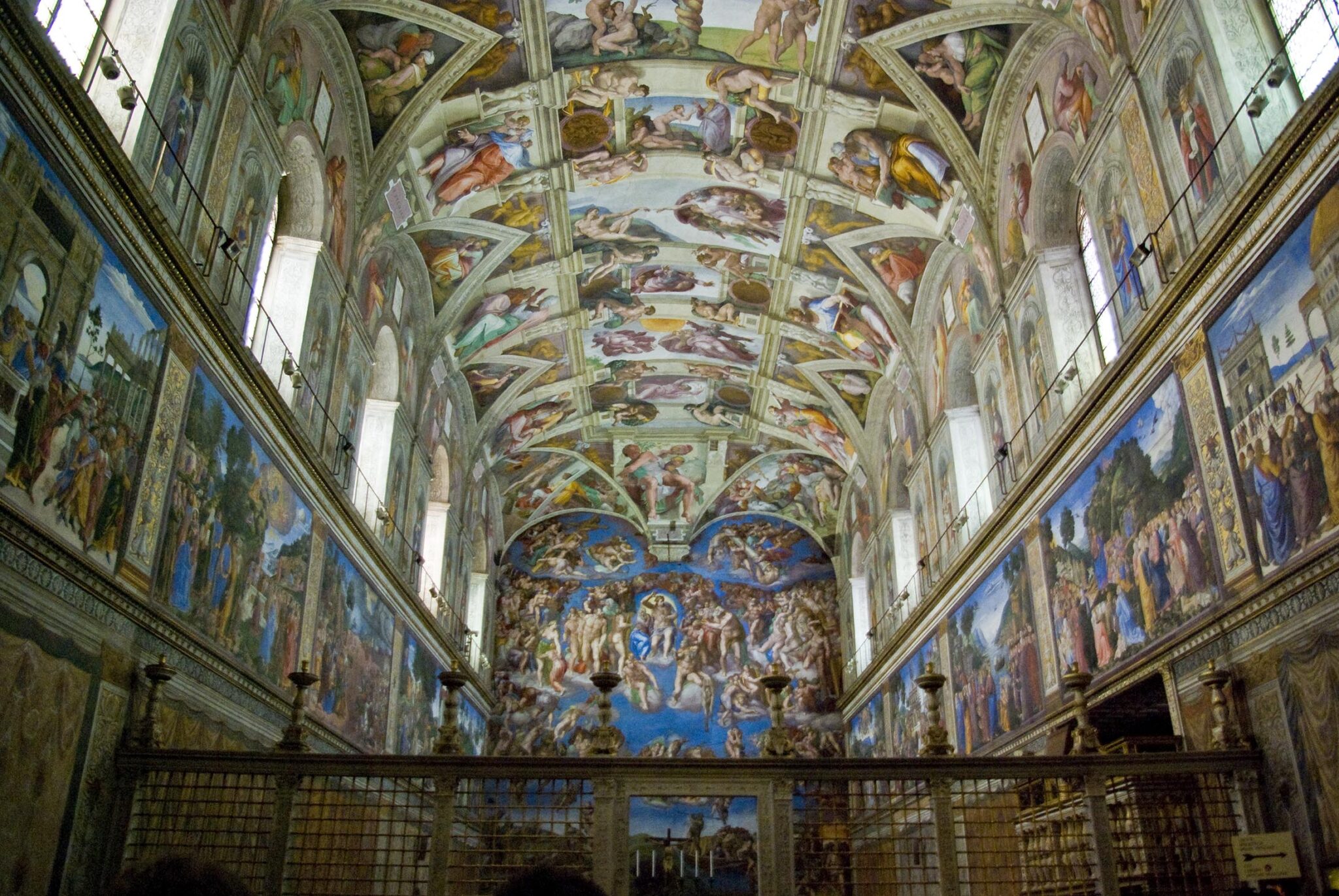Cappella Sistina – Città del Vaticano
La demolizione della Cappella Magna, di cui furono conservate unicamente le pareti medioevali fino all’altezza del primo cornicione, ebbe inizio durante la seconda metà del 1475; il progetto di consolidamento delle mura con la costruzione di una cortina laterizia si deve agli architetti fiorentini Baccio Pontelli e Giovannino de’ Dolci.
La Cappella ha una struttura a base rettangolare coperta da una volta a botte ribassata; tra le intersecazioni delle vele si creano delle lunette, sotto le quali si aprono le finestre ad arco da cui penetra la luce.
I lavori furono portati a compimento nel 1483: il 15 agosto, in occasione della festa dell’Assunzione della Vergine, la cappella fu consacrata e dedicata a Maria.
Tra il 1481 e il 1482 fu terminata anche la decorazione pittorica, affidata ai più importanti maestri dell’epoca, quali Perugino, Sandro Botticelli, il Ghirlandaio, Cosimo Rosselli e Luca Signorelli.
Nel corso del Cinquecento, a causa dei lavori di ristrutturazione della Basilica di San Pietro, la volta della cappella subì dei danni, e si perse il cielo stellato realizzato da Piermatteo d’Amelia; Giulio II, il papa dell’epoca, ne affidò quindi il rifacimento a Michelangelo nel 1508, che tra il 1536 e il 1541 realizzò anche l’imponente affresco del Giudizio Universale sulla parete dietro l’altare.











